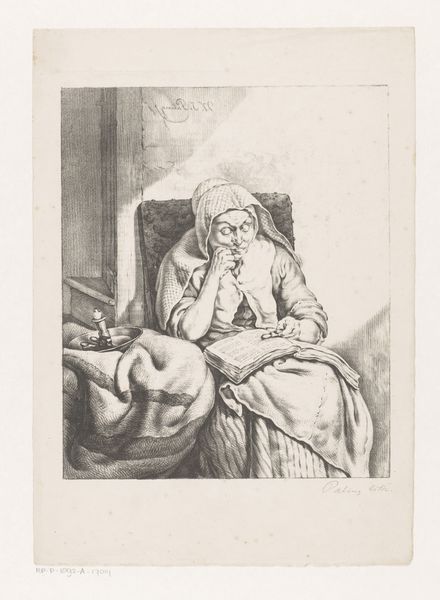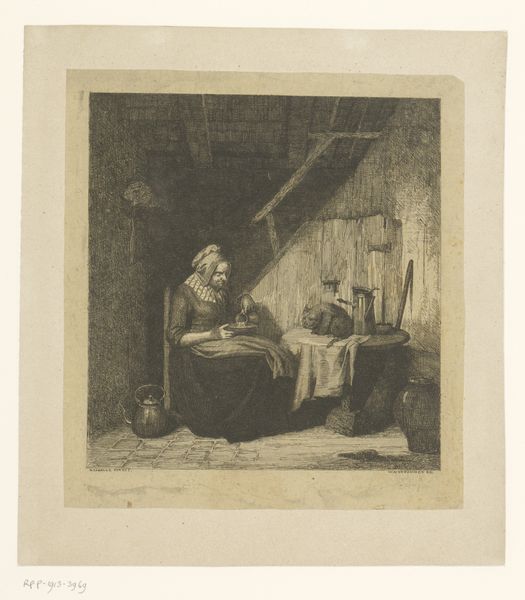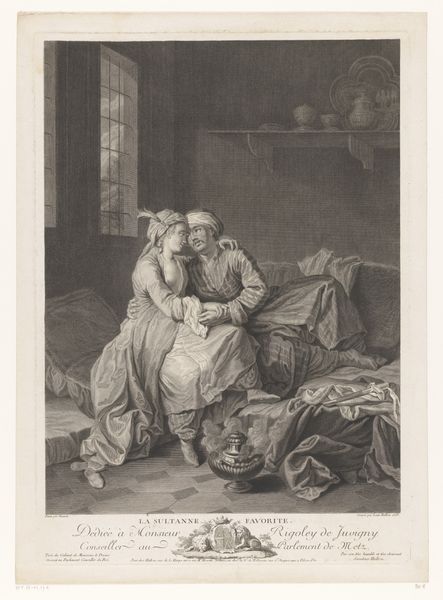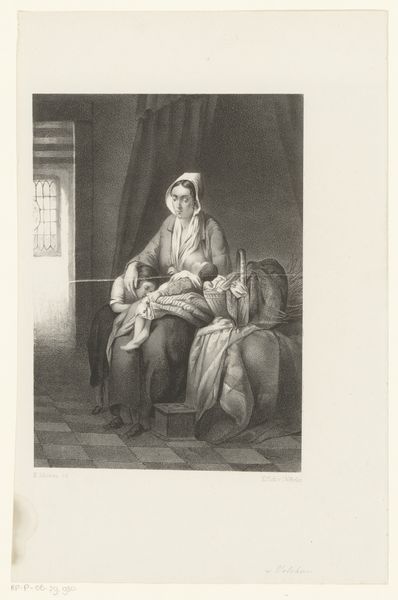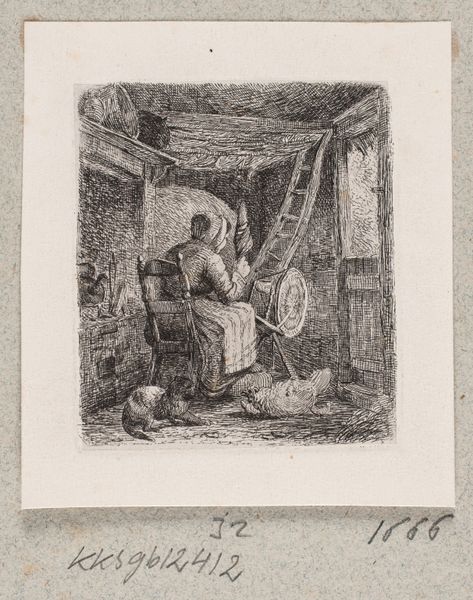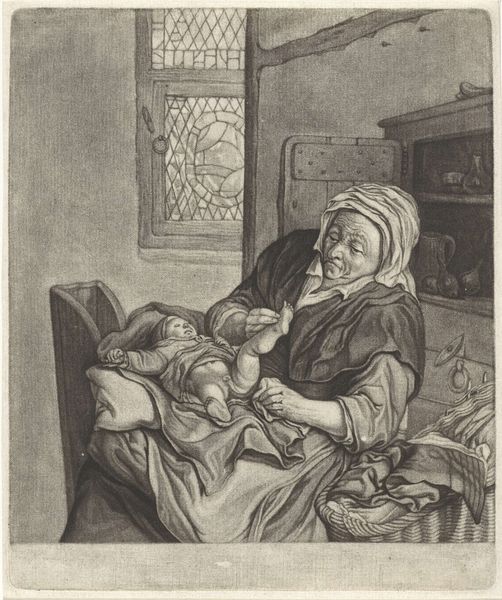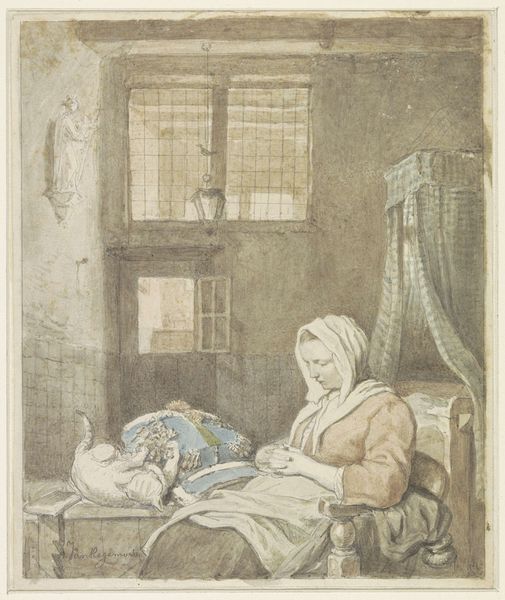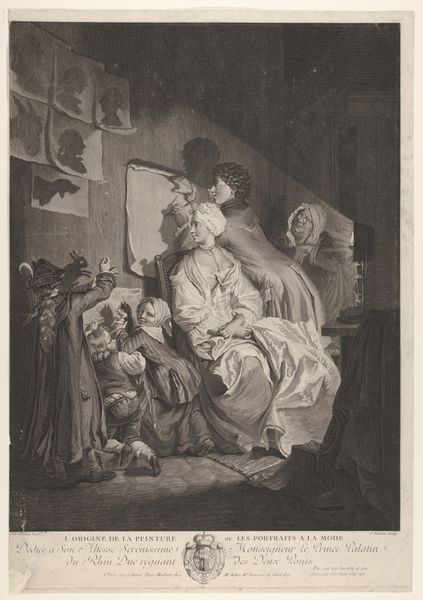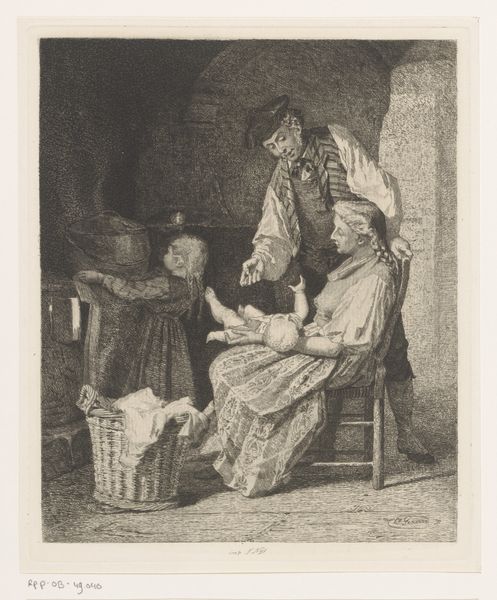
Slapende kantwerkster in een interieur met kat op tafel 1795 - 1873
0:00
0:00
drawing, paper, ink
#
portrait
#
drawing
#
paper
#
ink
#
genre-painting
Dimensions: height 159 mm, width 154 mm
Copyright: Rijks Museum: Open Domain
Curator: Here we see "Slapende kantwerkster in een interieur met kat op tafel," which translates to "Sleeping Lacemaker in an Interior with Cat on Table." It's an ink drawing on paper by Ignatius Josephus van Regemorter, dating from between 1795 and 1873, and it's held here at the Rijksmuseum. What's your first reaction to it? Editor: A sort of serene fatigue. The composition directs my eye from the woman’s bowed head to the sleeping cat – both seem completely at peace despite what is implied about their circumstances through this domestic scene. It makes me wonder about the socio-economic implications present here. Curator: Well, let’s delve into that. The drawing gives us clues about the labor involved. Look at the woman’s hands, the details of the lace pillow. It highlights the material process of lacemaking, an intricate and time-consuming craft. Consider the material value she's creating versus her own possible socio-economic position as defined by the need to do this work in the first place. Editor: Precisely. Lace production historically tied many women, especially those of lower social status, to exploitative labor arrangements. It suggests themes of domesticity versus economic survival, playing into a system that undervalued women’s manual labor in this context. The inclusion of a sleeping cat complicates this further. Curator: Yes, the cat. It's a common motif in genre paintings, and its presence here, sprawled out on the lacework, brings another perspective: the interruption of the labor process by leisure and comfort. The materiality of both the lacework and the woman's clothing suggests domestic craft, yet her exhausted posture suggests the heavy burdens placed upon women’s domestic labor. Editor: Right. The interplay of rest and industry is a central point for social critique here. It challenges any idealized vision of domestic work by showing how demanding and potentially exhausting labor practices can impact those involved in creation, who may never get the rewards from their handiwork. Even something that seems ornamental, like the lace, has implications for the women’s conditions of production. Curator: Indeed. It's interesting to examine this image through the lens of feminist economics, seeing how Regemorter captures these nuances in ink. It reveals an unexpected intersection between a relaxing home scene and a demand of time to survive through work. Editor: The work presents an insightful social critique, linking artistic and socio-political concerns through careful details in its representation of everyday life and work in women’s sphere of existence. The scene quietly testifies about its existence as a reality of its period.
Comments
No comments
Be the first to comment and join the conversation on the ultimate creative platform.
